A Deep Dive into Water Sports: Activities and Insights
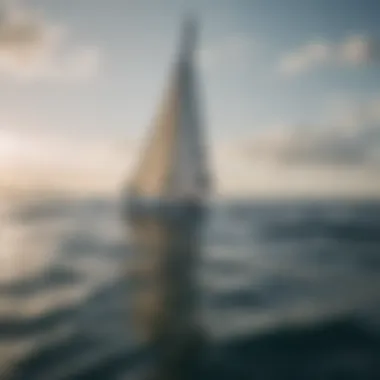
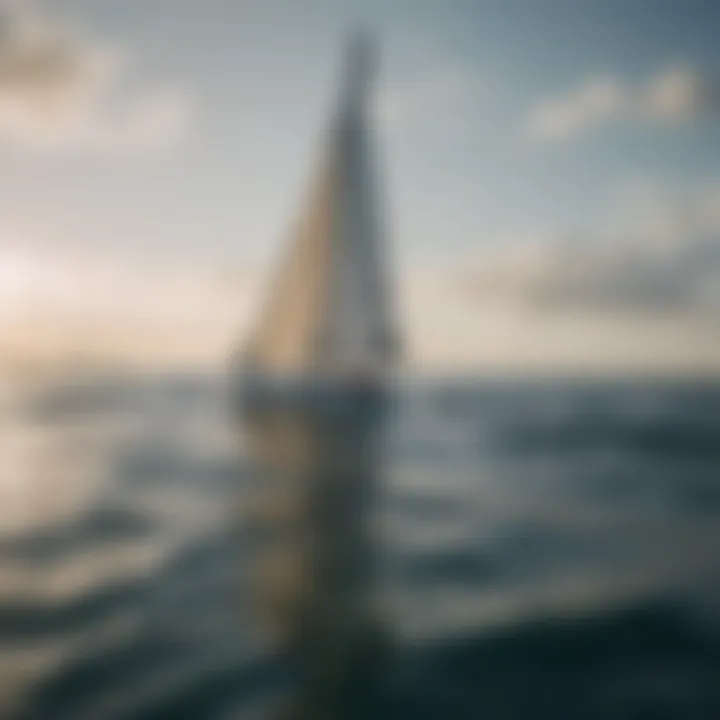
Intro
Water sports offer a thrilling blend of adventure and connection with nature. They open doors to experiences that not only challenge the body but also refresh the spirit. This guide aims to peel back the layers of various water sports, providing enthusiasts with a well-rounded understanding of the techniques, equipment, and environmental responsibility that comes with these activities. Whether you’re a seasoned sailor or just dipping your toes into the world of snorkeling, there’s always something insightful to discover.
As countless individuals take to lakes, rivers, and oceans, the allure of splash-filled experiences grows stronger. Water sports encapsulate everything, from tranquil moments spent sailing under the sun to the adrenaline rush from jet skiing or white-water rafting. Navigating this multifaceted domain requires knowledge of both skills and gear; hence, we start with techniques and skills that serve as the backbone for any water-loving adventurer.
Techniques and Skills
Essential Techniques for Beginners
Starting any new endeavor can feel daunting, but the beauty of water sports is that many basic techniques can lead to significant enjoyment. Mastering the fundamentals is essential for safety and overall experience. Here are some beginner-friendly techniques:
- Floatation Skills: Learning to float can be a lifesaver. It builds confidence and teaches one to relax in the water. Practicing in shallow waters can help newcomers find their comfort zone.
- Breath Control: Whether it's swimming or diving, managing your breath significantly impacts your endurance. Start by practicing breath-holding exercises on dry land.
- Paddling Techniques: In kayaks or canoes, understanding how to paddle effectively ensures better control and speed. Even a simple J-stroke can make a world of difference.
"In water sports, mastering the basics is like laying a solid foundation for a house; without it, everything else may crumble."
Advanced Skills for Experienced Watersport Enthusiasts
Once the basics are behind you, advancing your skills can unlock new levels of enjoyment and efficiency. Delving into more complex techniques will allow for deeper engagement with the sport:
- Tactical Navigation: This involves not only understanding the local geography but also reading water currents effectively. Knowing when to push against an outgoing tide or when to take advantage can enhance both safety and enjoyment.
- Rescue Techniques: For those who spend considerable time on the water, learning how to rescue someone can turn a potentially dangerous situation into a success story. Techniques vary by sport but are crucial nonetheless.
- Equipment Handling: Familiarity with different types of equipment for various water sports ensures you can maintain your gear effectively. From adjusting sail configurations to understanding kite rigging, hands-on experience is invaluable.
Equipment and Gear
Must-Have Gear for Each Watersport
No water sport is complete without its share of essential gear, and knowing what’s necessary can be a game changer:
- Sailing: A well-fitted life jacket, sunscreen, and appropriate footwear are key to enjoy sailing.
- Scuba Diving: Essential diving gear includes a wet suit, mask, and a personal buoyancy control device. Each piece is meticulously designed to optimize safety and performance underwater.
- Surfing: Picking the right surfboard is vital. Shortboards, longboards, and funboards offer distinct experiences depending on wave conditions.
- Kayaking: Ensure you have a durable kayak, a paddle that suits your height and strength, and a spray skirt if navigating rough waters.
Tips for Selecting the Right Equipment
Choosing gear can be overwhelming, but keeping these tips in mind makes the process smoother:
- Try Before You Buy: If possible, rent equipment before making a purchase. Getting a feel for it can help make a more informed decision.
- Ask the Experts: Don’t hesitate to reach out to instructors or experienced enthusiasts. Their insights can save both time and investment in the wrong equipment.
- Prioritize Quality: Long-lasting gear usually pays off in the long run. Brands known for durability often stand behind their products, offering guarantees or warranties that add peace of mind.
Arming yourself with the right skills and gear sets the stage for endless aquatic adventures. But as we venture forth, it’s essential to consider the bigger picture: our responsibility towards the environment and the communities that embrace these exhilarating activities.
Preface to Water Sports
Water sports encompass a broad range of activities that harness the elements of lakes, rivers, and oceans, inviting participants to immerse in their environment. The allure of water sports lies not only in their exhilarating experiences but also in their ability to connect individuals with nature. As we explore this multifaceted world, understanding the significance of these activities is paramount.
Whether one is strapped to a surfboard, gliding through waters in a kayak, or drifting steadily on a sailboat, the benefits of engaging in the water are plentiful. From fostering physical fitness and enhancing mental health, to developing teamwork skills, water sports serve as a catalyst for personal growth. Additionally, there’s an undeniable thrill tied to mastering the waves or overcoming the challenges posed by varying weather conditions.
Defining Water Sports
Water sports refer to any sport or recreational activity that occurs on or in water. This can encompass a wide array of activities ranging from competitive sports like sailing and water polo to leisurely pursuits such as swimming, fishing, or paddleboarding. Each of these pursuits varies in skill level, required gear, and risk factors, allowing for a wide range of participation options.
Among water sports, some categories include:
- Surface Sports: Includes activities like surfing and wakeboarding where the focus is on staying atop the water.
- Subsurface Activities: Such as scuba diving and snorkeling, which delve beneath the surface to explore aquatic ecosystems.
- Boating Sports: Including sailing and rowing, often involving larger crafts to navigate open water.
This variety ensures that there’s something for everyone, regardless of skill or interest level.
The Evolution of Water Sports
Historically, water sports have evolved alongside human civilization. From ancient cultures that relied on boats for fishing and transportation, to modern-day competitive sailing events, the journey has been significant.
In more recent history, technology has profoundly reshaped water sports. The introduction of buoyancy aids, improved surfboards, and advanced diving equipment has made these activities not only safer but also more enjoyable. Additionally, the rise of social media has transformed the way enthusiasts share their experiences, making it easier to connect with fellow adventurers and learn new techniques that may have once seemed insurmountable.
With ongoing innovations, it’s clear that the evolution of water sports will continue, offering new ways to engage with water, adventure, and a community of like-minded individuals. Embracing this past enriched context helps us appreciate current practices and the future developments in this vast field of recreation.
Categories of Water Sports
The world of water sports offers a captivating array of activities, each with its own unique characteristics and appeal. Delving into the categories of water sports not only helps enthusiasts choose the right sport but also fosters an appreciation for the diverse environments and cultures tied to these activities. Whether you're seeking the thrill of the waves, the tranquility of gliding over calm waters, or the challenge of harnessing the winds, the possibilities are plentiful. Understanding these categories also informs safety measures, equipment choices, and community dynamics that are crucial in enhancing one’s experience.
Hailing from the Waves: Surfing
History and Culture
Surfing isn’t just a sport; it's a way of life for many. Dating back to ancient Polynesian culture, it has evolved over the centuries, now resembling a blend of art and athleticism. For many, riding the waves is not just about catching a swell but about connecting with nature and one's inner self. The unique rituals and customs surrounding surfing culture, such as respect for the ocean and fellow surfers, are vital for sustaining its spirit.
Surfing’s historical significance also highlights environmental consciousness, with a growing number of surfers advocating for ocean preservation. This rich background makes it a compelling choice in the water sports landscape, drawing people not just for the thrill but for community and mindfulness aspects that come with it.
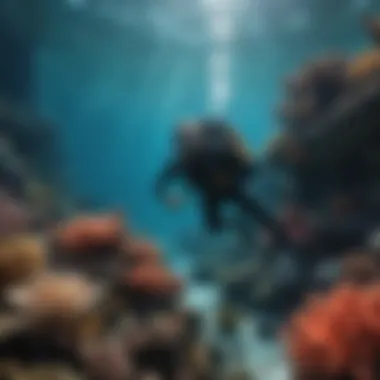
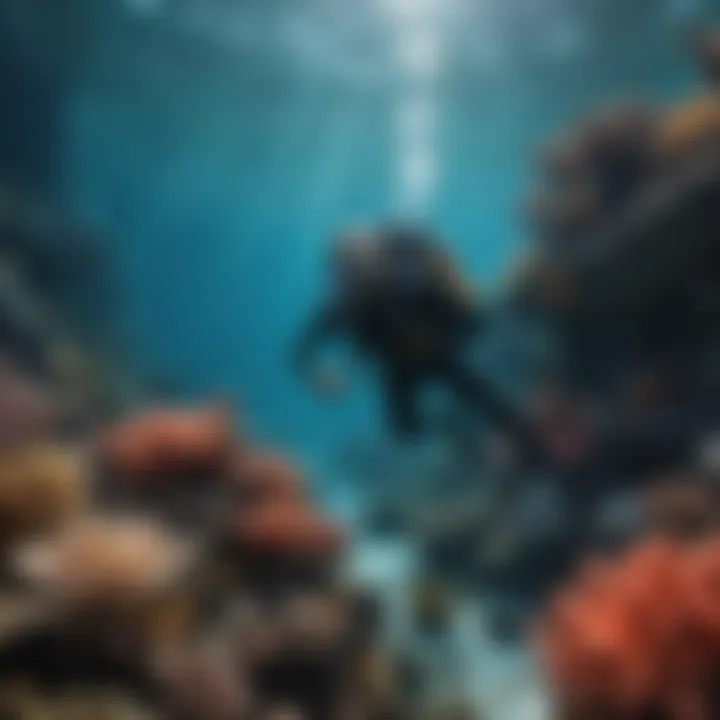
Essential Gear
When it comes to surfing, the right gear can make or break your experience. The surfboard stands central here, with varying shapes and sizes designed for different wave types. From shortboards for agility to longboards for stability, selecting the right board can enhance both performance and enjoyment.
Wetsuits also play a significant role in comfort and safety, particularly in colder waters. This attention to gear reflects a deeper understanding of the sport itself, showing how equipment is intertwined with one’s ability to experience surfing fully.
Top Destinations
Surfing destinations range from the famous beaches of California to the serene shores of Bali. Locations like Pipeline in Hawaii are reputed for their powerful waves, while spots like Tofino in Canada offer a more laid-back surfing experience. Each destination provides its own flavor, from local surf culture to varying levels of wave difficulty. Exploring these locations uncovers not just great surf but also diverse communities that embody the rich tapestry of surfing culture.
The Serenity of Kayaking and Canoeing
Differences in Craft and Technique
At its core, kayaking and canoeing enable practitioners to explore waterways at a slower pace, allowing for a deep connection with nature. While both utilize a paddle and share some similarities, they differ significantly in craft design and paddling techniques. Kayaks, with their closed design and lower profile, allow for greater maneuverability, whereas canoes offer more space and are generally easier to enter and exit for leisurely excursions.
Understanding these differences is crucial, as it shapes the experience and choice of waterways to explore. For those who prioritize speed, kayaking may be preferred, while those wishing to relax and engage in conversations with companions may lean towards canoeing.
Safety Precautions
Safety in kayaking and canoeing cannot be overstated. Wearing personal flotation devices (PFDs) is essential, regardless of skill level. Knowledge of water conditions, including currents and wind patterns, is equally paramount for maintaining safety on the water.
Understanding and implementing these precautions fosters a more enjoyable experience and mitigates risks associated with water adventures. Emphasizing preparation helps ensure that all adventure seekers are well-equipped for whatever nature throws their way.
Best Locations for Exploration
Kayaking and canoeing offer immense diversity in terms of exploration locations. Whether gliding through the calm lakes of the Rocky Mountains or paddling through the intricate waterways of the Florida Everglades, each locale presents unique experiences. Popular spots often feature scenic views, abundant wildlife, and varying difficulty levels to cater to all skill sets.
From resort areas offering guided tours to remote locations for seasoned paddlers, finding the right place to explore opens doors to many adventures.
Sailing: A Timeless Pursuit
Types of Sailing
Sailing offers a distinctive experience where wind becomes the primary guide across water. Different types of sailing, such as recreational sailing, racing, and cruising, each cater to a variety of passions. Recreational sailing emphasizes relaxation, while racing sharpens competitive skills, focusing on speed and agility.
Learning about these types provides insight into the emotional and physical benefits sailing can offer. It's an accessible pursuit for all ages that invites both camaraderie and personal challenge.
Navigation Fundamentals
Basic navigation skills are fundamental for any sailor, enhancing safety and enjoyment on the water. This includes understanding wind direction, reading charts, and employing navigational tools like compasses and GPS systems. Mastering these essentials enables sailors to traverse expansive waters with confidence.
Additionally, these skills foster a sense of adventure and exploration, allowing sailors to connect deeply with their surroundings.
Community and Competitions
The sailing community thrives on connection and competition. Local sailing clubs offer fellowship and a platform for skill-building. With events ranging from friendly regattas to competitive races, these gatherings highlight the community's spirit. Engaging in these communities not only builds friendships but also nurtures a deeper commitment to the sport.
Diving into Scuba Diving
Certification and Training
Diving safely requires proper certification, which emphasizes the importance of rigorous training. Courses offered by organizations such as PADI or SSI teach essential techniques for managing underwater environments. Throughout this training, divers learn crucial skills to safeguard themselves and those they dive with.
Participating in certified training ensures that divers are well-prepared and aware of the risks involved in underwater exploration. This education significantly elevates the understanding of the marine ecosystem.
Essential Equipment
The right equipment is vital for enjoyable scuba diving. Key components, such as diving masks, fins, and tanks, directly affect the overall experience. Select equipment should not only be comfortable but also appropriate for the diving conditions one plans to encounter.
Choosing quality gear can greatly enhance safety, allowing divers to focus solely on the wonders of underwater life. However, investing in scuba gear can be costly and requires proper maintenance, which some divers may overlook.
Environmental Considerations
Diving comes with the responsibility of environmental stewardship. Increased awareness of how human impact can affect underwater ecosystems represents a crucial aspect of diving culture. Practices such as avoiding touching coral reefs and practicing responsible diving help preserve these natural wonders for future generations.
Safeguarding the environment also unites divers, fostering strong advocacy for marine conservation initiatives. Understanding this aspect transforms mere exploration into an active commitment to environmental protection.
Techniques and Skills
Mastering water sports isn’t just about being brave enough to jump in; it rather hinges on honing techniques and skills that enhance performance and avoid accidents. The nuances of every sport—from navigating turbulent waters to controlling a sail—require foundational and advanced skill sets. These techniques not only enrich the experience but also lead to a stronger connection with the water and the community of enthusiasts around.
Fundamental Skills for All Water Sports
Balance and Coordination


Balance and coordination are central to virtually every water sport. Whether you’re surfing the waves or paddling a kayak, maintaining stability is key. A solid balance helps to prevent falls, while good coordination ensures you can execute maneuvers smoothly. This makes these skills particularly valuable because, without them, the enjoyment of water activities can quickly be overshadowed by mishaps.
A unique aspect of balance is its adaptability. For example, surfers develop muscle memory for shifting their weight instantly in response to the surf. In contrast, kayakers might need to shift their center of gravity to navigate tight turns. Although perfecting this takes time and patience, it's beneficial as better balance leads to an overall boost in confidence.
Navigation Skills
Navigation skills are crucial, especially for those who venture beyond calmer waters. Knowing how to read water conditions, understanding currents, and recognizing landmarks can make a world of difference. Strong navigation abilities not only enhance safety for individuals but also foster the capability to explore farther reaches of aquatic landscapes.
A key characteristic of navigation skills is their applicability if you’re sailing, kayaking, or even scuba diving. Each venue demands a different set of navigation tools—from maps and compasses in sailing to GPS devices in diving. The ability to interpret these tools proficiently can be the difference between a refreshing adventure and a hazardous misadventure.
Physical Conditioning
Physical conditioning plays a vital role in performing well in water sports. Strong core muscles, endurance, and flexibility significantly minimize the risk of injury. While this might sound easy for athletes, consistent conditioning can be a challenge, especially for those just starting out in water sports.
What stands out about physical conditioning is its holistic nature. The requirements vary depending on the sport—a scuba diver needs lung capacity and strength, while a surfer benefits from agility and upper body strength. Therefore, engaging in a well-rounded fitness regime is often recommended, but it demands commitment. Those willing to invest in their physical wellness will typically notice an improvement in performance.
Advanced Techniques for Enthusiasts
As one delves deeper into water sports, advancing techniques becomes the differentiator between a casual practitioner and a dedicated enthusiast. Mastery of these skills not merely elevates your experience but can also unlock opportunities for competition and community involvement.
Trick Riding in Surfing
Trick riding in surfing marks a thrilling progression for any surf enthusiast. This encompasses various maneuvers such as aerials, spins, and flips that showcase agility and skill. Beyond the impressive visuals, trick riding also embraces the challenge, requiring considerable investment in balance and timing.
The allure of trick riding lies in its ability to elevate a routine surf session into an engaging performance. However, mastering these tricks presents a unique set of challenges—one must be prepared for falls, not only physically but mentally too. The learning curve can be steep, yet overcoming hurdles will lead to great satisfaction and celebrate accomplishments.
Freestyle Kayaking Techniques
Freestyle kayaking takes the idea of skillful maneuvering to new heights. This practice involves performing tricks on the water, such as spins, flips, and squirts, which are both challenging and rewarding. Freestyle kayaking solidifies one’s control over their craft and emphasizes creativity.
An important characteristic of freestyle kayaking is the requirement of both technical prowess and artistic expression. Whether in a calm river or a frothy rapid, execution involves a blend of precise timing and imaginative flow. Enthusiasts find this technique immensely rewarding; however, it demands a strong foundation in basic skills, making it a journey in itself.
Efficient Sailing Maneuvers
Efficient sailing maneuvers revolve around maximizing velocity while minimizing sail adjustments, making for a seamless journey. Sailors using these maneuvers can better respond to wind changes, water currents, and other factors that affect sailing. Knowledge in trimming sails effectively, adjusting to the wind, and shifting weight are all part of this complex dance on water.
One significant advantage of mastering efficient sailing techniques is the comparison it creates among sailors. With the pressures of competition, understanding these tactical elements tends to set one apart. However, the learning curve is steep, necessitating discipline and dedication. In navigating the intricacies of sailing, sailors often experience both bonding and challenges that deepen their love for the sport.
"The mastery of water sports techniques can transform a simple splash into a breathtaking dance with nature."
Engaging in water sports not only provides thrill but also taps into a deeper connection with the environment. Emphasizing the right techniques and skills lays the groundwork for safe, adventurous, and meaningful experiences on the water.
Safety in Water Sports
When it comes to water sports, safety cannot be overstated. It is the bedrock upon which joyful and exhilarating experiences are built. In the throes of excitement, it's all too easy to overlook essential safety measures. This section dives into the fundamentals of safety, ensuring that both novices and seasoned enthusiasts are well-informed.
Understanding Water Safety Basics
Personal Flotation Devices
Personal Flotation Devices (PFDs), commonly known as life jackets, are not just accessories; they are lifesavers. These devices must be worn in most water sports, as they significantly enhance buoyancy and reduce the chances of drowning. The key feature of PFDs is the inherent ability to keep your head above water, especially in turbulent conditions. This makes them a critical choice for anyone engaging in activities like kayaking or jet skiing, where the unexpected can happen.
What sets modern PFDs apart is their range of designs tailored for different activities. You’ll find vests that are lighter and less bulky for paddling sports, as well as models imbued with features like pockets and reflective strips for visibility. While some may argue they can restrict movement, the advantages in keeping one safe far outweigh any downsides, making PFDs an indispensable part of water sports gear.
Awareness of Water Conditions
Understanding the state of the water is as crucial as donning proper gear. Awareness of Water Conditions includes being cognizant of weather changes, currents, tides, and more. This knowledge is paramount for safety and can guide decisions on when to launch or call it a day. The benefit of being aware of conditions is that it allows you to predict potential hazards, thus reducing risk.
If the waves are choppy or the wind picks up, it’s a telltale sign to reassess. A unique aspect of this awareness is the impact of local ecosystems on water conditions; for instance, estuary currents can be tricky. On the flip side, disregarding water conditions can lead to regrettable situations. Thus, a keen awareness can enhance enjoyment and provide a safer experience on the water.
Emergency Protocols
Having a robust plan for emergencies is just as important as enjoying the ride. Emergency Protocols encompass everything from first aid knowledge to rescue operations when things don’t go according to plan. The characteristic of effective emergency protocols is their ability to catalyze swift action during a crisis, which can make all the difference in mitigating risks.
What sets these protocols apart is that they often involve trained personnel and equipment; for example, having a buddy system in place is a popular way to look out for one another. Yet, here’s a catch: while most people are inclined to believe they know what to do in a water emergency, the reality is that many have no formal training. To combat this, awareness and training programs are a vital resource available to athletes and enthusiasts alike. Hence, implementing emergency protocols not only prepares you for the worst but also cultivates a culture of safety among participants.
Protecting the Environment while Engaging
Engaging in water sports entails a responsibility that extends beyond personal safety. Protecting the environment is paramount, ensuring that future generations can enjoy the same thrills. Topics under this umbrella highlight the importance of sustainable practices, respect for wildlife, and community initiatives — each contributing to a healthier ecosystem.
Sustainable Practices
Sustainable Practices encapsulate a myriad of behaviors that promote ecological viability whilst indulging in water sports. Focusing on minimizing waste, using eco-friendly gear, and promoting responsible land use are just some facets of sustainable engagement. This proactive approach demonstrates not just regard for the environment but a commitment to preserving it for others.
One key thing about sustainable practices is that they often require collective effort; for instance, organizing community clean-ups after a day at the beach is a popular initiative, fostering camaraderie and environmental stewardship. While some argue that sustainable practices can limit recreational enjoyment, the undeniable advantage lies in safeguarding our natural playgrounds for years to come. The choice to engage sustainably isn’t just popular—it’s essential.
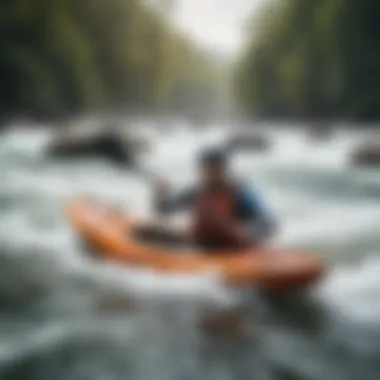
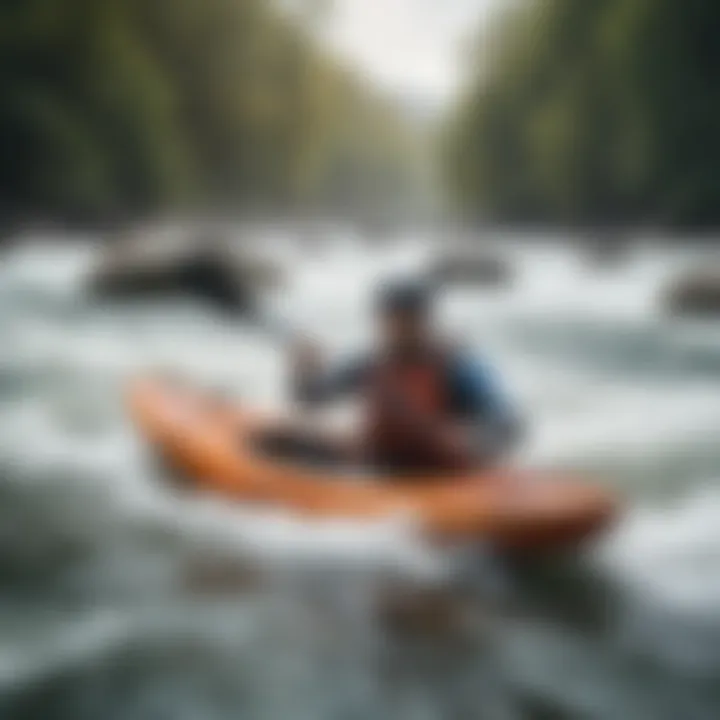
Respecting Wildlife
When participating in water sports, respecting wildlife means recognizing that other creatures share these waters. Understanding their habitats and behaviors is foundational. By keeping a respectful distance from marine life, enthusiasts contribute to maintaining ecological balance. Notably, this respect fosters conservation and promotes healthy ecosystems.
The unique feature of this adherence is that it enhances the experience; many water sports enthusiasts report greater satisfaction when interacting harmoniously with nature. On the contrary, ignorance about environmental regulations or reckless behavior can lead to disruption of habitats and even penalties. Thus, cultivating awareness and respectful practices ensures both enjoyment and preservation of biodiversity.
Community Initiatives
The footprint of water sports reaches far beyond individual recreation; community initiatives play a significant role in shaping the culture surrounding these activities. These initiatives often involve collaboration between enthusiasts, local organizations, and government bodies. Not only do they promote safety and sustainability, but they foster social bonds among participants.
Potential initiatives could include water safety workshops, community clean-up events, or awareness campaigns on best practices. The uniqueness of these efforts lies in their ability to empower local athletes and communities, strengthening ties and love for water activities. The challenge, however, is securing consistent involvement to ensure longevity and impact. Yet, the benefits of community engagement far outweigh the disadvantages, making it a vital cog in the wheel of water sports culture.
The Community and Culture of Water Sports
Water sports bring together a diverse group of individuals, creating a tapestry woven from shared interests and experiences. The community and culture surrounding water sports play a crucial role in not just fostering enthusiasm but also in enriching participants' lives. Being part of this culture means joining a network of people who share a love for adventure, the ocean, lakes, and rivers. In this section, we’ll explore how connections are built, the influential figures within these sports, and what makes this community so vibrant.
Building Connections through Shared Passions
Local Clubs and Organizations
Local clubs and organizations are the backbone of the water sports community. They offer affordable access to gear, training, and like-minded individuals. A distinctive trait here is the inclusivity often found within these groups. From amateur enthusiasts to seasoned pros, you’ll find a mixture of skill levels under one roof.
Membership usually provides opportunities for discounts on equipment rental and lessons. Participating in local clubs keeps enthusiasts engaged year-round, fostering long-lasting friendships. However, this dependence on local clubs can sometimes limit exposure to broader networks and opportunities further afield.
Social Media Connections
In our tech-savvy world, social media serves as a powerful tool for connecting water sports lovers. Platforms like Facebook and Instagram enable players and fans to interact on a global scale. The beauty of social media is that it allows enthusiasts to share triumphs, stumbles, and everything in between.
One unique feature of social media connections is the real-time communication it offers. You can find tips, meet-ups, or even plan competitions all from your phone. The downside, however, is the abundance of noise that can come with it; not every piece of advice shared is worth taking to heart. Regardless, for many, digital communities serve as a springboard into physical ones, turning online interactions into real-life adventures.
Competitions and Events
Competitions and events are significant in establishing camaraderie and excitement within the water sports culture. Local, national, and even international competitions not only provide a platform for competitors to showcase their skills but also attract spectators who share a passion for these activities. These events often resemble a carnival atmosphere, filled with fun, energy, and mutual encouragement.
Moreover, competitors often find support from fellow athletes, further solidifying bonds within the community. However, these events can create a high-pressure environment for some, which might deter new participants from joining the fun or from feeling relaxed on the water.
Influential Figures in Water Sports
Pioneers of Surfing
Pioneers of surfing have undoubtedly left a lasting legacy in the water sports community. Figures like Duke Kahanamoku and Gidget paved the way for what surfing means today. Understanding their journeys helps newcomers appreciate the history intertwined with the sport. Their tales often revolve around perseverance and innovation, inspiring a generation to take to the waves.
The unique selling point of these pioneers is not just their ability to surf, but their roles as ambassadors for the sport. They contributed to popularizing surfing in ways that opened doors for people from all walks of life to engage with the ocean. Yet, their stories can carry pressure for modern surfers to excel, creating expectations that might feel overwhelming.
World-Class Sailors
World-class sailors epitomize a blend of skill, discipline, and dedication that many aspire to achieve. Sailors like Ellen MacArthur and her record-breaking voyages have inspired countless enthusiasts to take to the seas. Their narratives encapsulate the essence of adventure and exploration, emphasizing the importance of seamanship.
What makes these sailors particularly captivating is their continued impact on the culture of sailing—even long after their competitive careers. Many transition into advocacy, making strides in environmental awareness, which becomes indispensable as we embrace water sports. Nevertheless, the achievements of these sailors can paint an intimidating picture for newcomers—a potential hindrance to entry into the sport.
Scuba Diving Legends
When you think of scuba diving legends, names like Jacques Cousteau often spring to mind. Their contributions to the understanding of marine ecosystems elevate them beyond mere athletes; they are educators and advocates for the underwater world. This highlights a critical aspect of diving culture—a responsibility to protect the environments being explored.
Diving legends like Sylvia Earle emphasize community through awareness and sustainability, advocating for the conservation of delicate ecosystems. While their accomplishments add prestige to the sport, they also introduce the burden of environmental concern that weight on new divers. Embracing this culture of stewardship is vital for future generations who look to enjoy underwater exploration.
“Water is life, and the more we engage with it, the more we must honor its presence.”
As we explore the community and culture of water sports, it becomes clear that it is rich with opportunities for connection, competition, and growth. From local clubs to global events, the interplay of individuals creates an ecosystem that nurtures both passion and responsibility. This sacred connection with water drives the narrative forward, shaping not just the sports themselves, but the lives of those who partake in them.
End: Future of Water Sports
As we sail into the promising horizon of water sports, it’s clear that the landscape is shifting, shaped significantly by technological innovations and a growing emphasis on inclusivity. The relevance of understanding these elements cannot be overstated. Not only do they shape how enthusiasts engage with their chosen activities, but they also have far-reaching consequences for the environment and community connections.
Technological Advancements
The technological enhancements we've seen in recent years in water sports are nothing short of revolutionary. Take, for instance, the rise of smart gear. Wearable technology is no longer just a trend; it’s a game-changer for many. Wearables that monitor heart rates or GPS devices tracking routes provide real-time data, improving safety and performance for those who thrive on adrenaline.
Drones are also leaving their mark in the world of aquatic activities. They don't just capture stunning aerial footage of water sports; they aid in safety monitoring during events, ensuring participants are well looked after. In addition, virtual reality is beginning to play a role in training setups, allowing individuals to practice skills without ever wetting a toe.
However, these advancements come with their own set of challenges. Balancing tech and authenticity is important. While gadgets can help novices learn faster and keep experienced sports enthusiasts safer, some fear that reliance on these smart tools might diminish the purity of the experiences that water sports offer.
Additionally, having access to advanced equipment often comes with a higher price tag, potentially making participation in water sports less accessible to those in lower-income areas.
Embracing Inclusivity in Water Activities
Inclusivity stands as a cornerstone for the future of water sports. The idea that everyone, regardless of ability, should be welcomed into the fold is gaining traction. Gone are the days when water sports were viewed as exclusive or elitist. Today, there are movements aimed at ensuring that adaptive equipment is not just available but actively promoted. For instance, adaptive kayaking and inclusive scuba diving programs have opened doors for those with disabilities, creating safe and supportive environments for all.
Moreover, organizations are starting to recognize that diversity in participants not only broadens participation but enriches the experience. Communities are better served when they reflect the various backgrounds and stories of their members.
Inclusive initiatives create connections, helping break down social barriers and build a sense of belonging within the water sports community. Programs are being rolled out that emphasize the importance of mentorship, skill-sharing, and shared experiences. Through these efforts, the future appears to be not just bright but inherently more colorful and vibrant.







